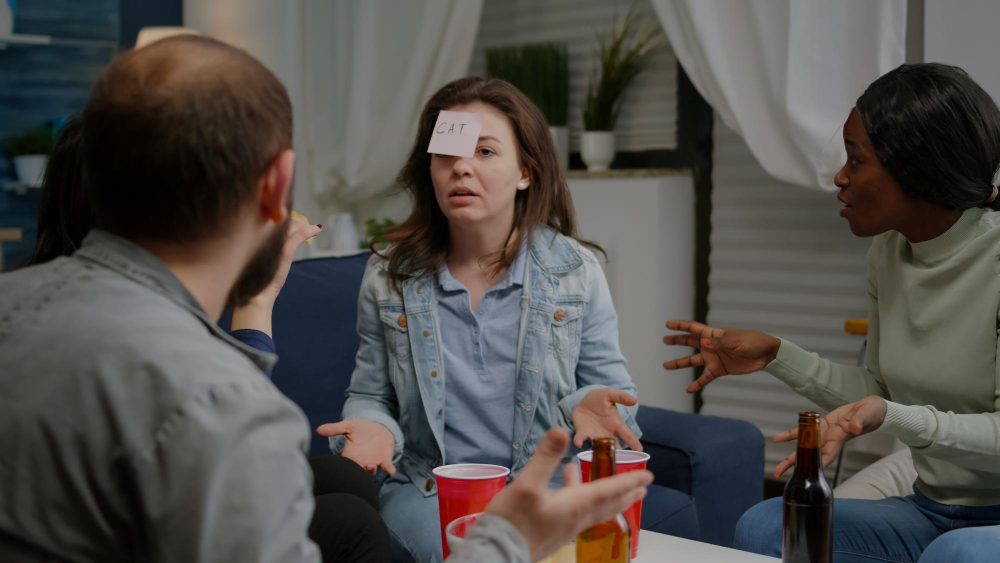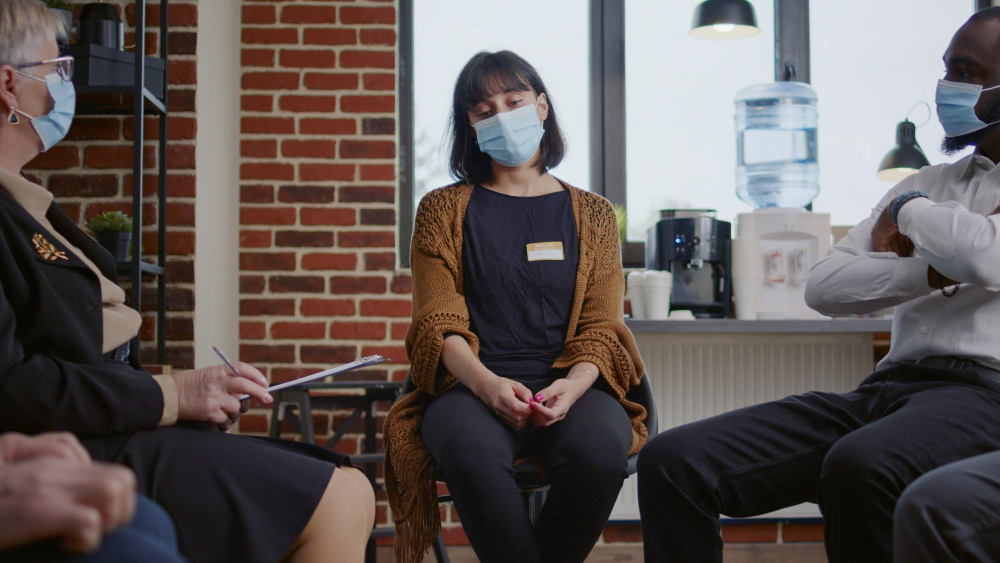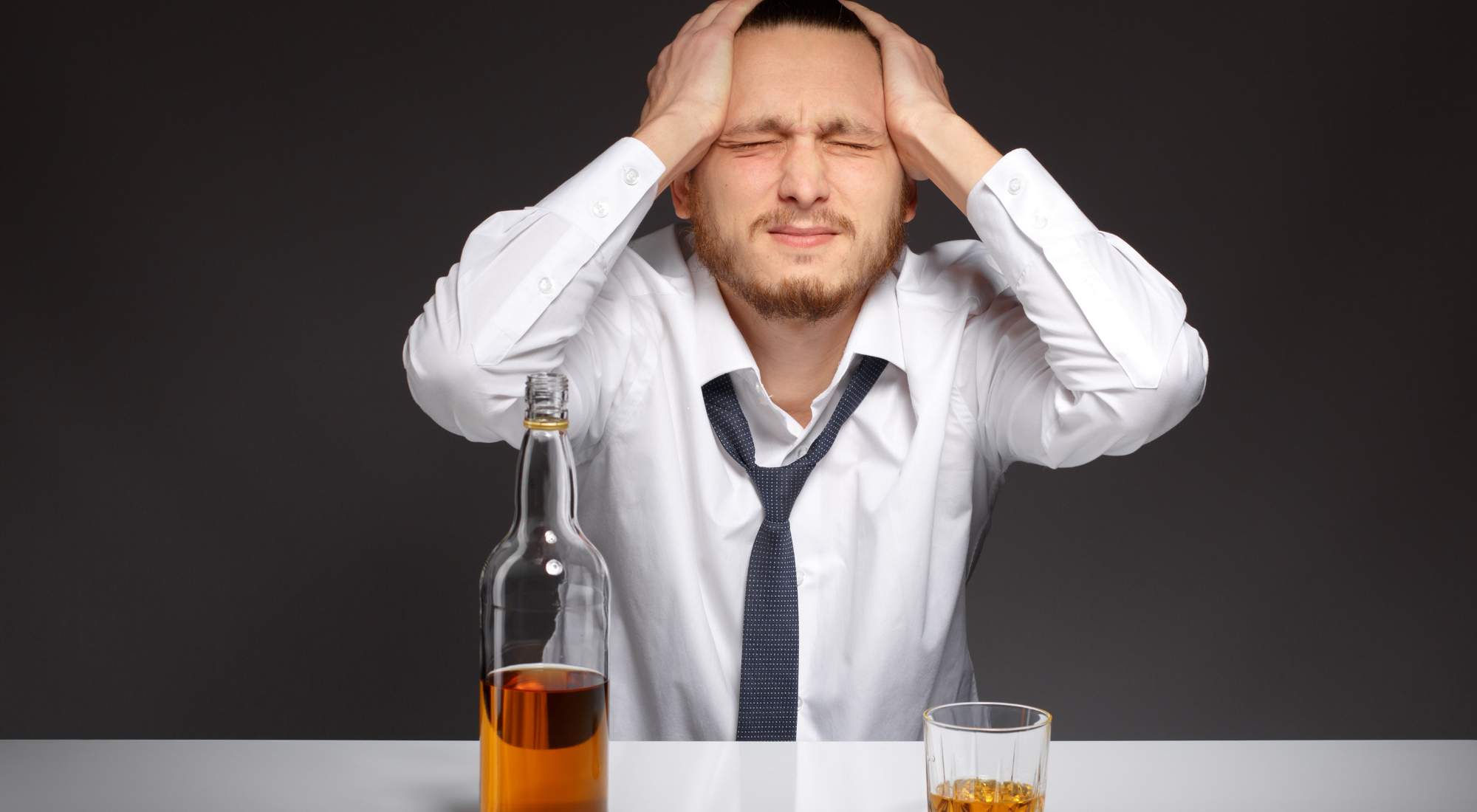Top Medications for Addiction Treatment
August 2, 2024
Discover the top medications for addiction treatment. From opioids to alcohol use disorder, find the right solution for recovery.

Understanding Medications for Addiction
When it comes to treating addiction, medications play a crucial role in helping individuals achieve and maintain sobriety. The use of medication-assisted treatment (MAT) has been proven effective in managing addiction and increasing the chances of successful recovery. Let's explore the importance of addiction medications and the different types available.
Importance of Addiction Medications
Medications for addiction treatment are an essential component of comprehensive care. They work by addressing the underlying changes in the brain caused by substance abuse, helping individuals reduce cravings, manage withdrawal symptoms, and prevent relapse. The use of medications, in combination with counseling and behavioral therapies, can significantly improve treatment outcomes.
For opioid addiction, medications such as buprenorphine, methadone, and naltrexone have been widely used to assist individuals in their recovery journey. These medications have been shown to reduce opioid use, withdrawal symptoms, and cravings while improving treatment retention rates. Additionally, they can help individuals regain stability in their lives, enabling them to focus on their recovery and rebuild their relationships.
Similarly, medications have also proven effective in treating alcohol use disorder (AUD). Medications like acamprosate, disulfiram, and naltrexone can help individuals reduce alcohol cravings, prevent relapse, and support long-term recovery. These medications work in different ways to address the complex nature of alcohol addiction, allowing individuals to break free from the cycle of alcohol abuse [2].
Types of Addiction Medications
The types of medications used for addiction treatment depend on the specific substance being abused. Let's take a closer look at the medications commonly used for opioid addiction and alcohol use disorder.
Medications for Opioid Addiction
- Buprenorphine Treatment: Buprenorphine is a partial opioid agonist that helps reduce cravings and withdrawal symptoms without producing the same euphoric effects as the abused opioids. It can be prescribed by certified physicians, nurse practitioners, and physician assistants in an office setting.
- Methadone Treatment: Methadone is a synthetic opioid agonist that has been successfully used for over 40 years to treat heroin addiction. It prevents withdrawal symptoms and relieves drug cravings by acting on mu-opioid receptors. Methadone is typically dispensed through specialized treatment centers.
- Naltrexone Treatment: Naltrexone is an opioid antagonist that blocks the effects of opioids by binding to opioid receptors in the brain. It can be administered orally or as a long-acting injectable. Naltrexone is particularly helpful for individuals who struggle with taking their medications regularly, as it only needs to be taken once a month.
Medications for Alcohol Use Disorder
- Acamprosate for AUD: Acamprosate helps individuals with alcohol use disorder by reducing the physical and emotional distress associated with abstinence. It is typically used in combination with counseling and psychosocial support to support long-term sobriety.
- Disulfiram for AUD: Disulfiram works by causing unpleasant reactions (such as nausea and flushing) when alcohol is consumed, acting as a deterrent to drinking. This medication is most effective when there is strong support from family or friends to ensure compliance.
- Naltrexone for AUD: Naltrexone, when used for alcohol use disorder, helps reduce alcohol cravings and blocks the rewarding effects of alcohol. It can be taken orally or as an extended-release injectable, providing flexibility in treatment options.
By understanding the importance of addiction medications and the different types available, individuals can make informed decisions about their treatment options. It's crucial to work closely with healthcare professionals who specialize in addiction medicine to determine the most suitable medication and treatment plan for each individual's unique needs.
Medications for Opioid Addiction
When it comes to treating opioid addiction, medications play a crucial role in helping individuals achieve and maintain recovery. There are several medications available that have been proven to be effective in treating opioid use disorder. In this section, we will explore three of the top medications for opioid addiction: Buprenorphine treatment, Methadone treatment, and Naltrexone treatment.
Buprenorphine Treatment
Buprenorphine is a medication approved for maintaining abstinence from heroin or prescription opioid use disorder. It is classified as a partial opioid agonist, meaning it can activate opioid receptors to a lesser extent compared to full agonists like heroin or oxycodone. By binding to these receptors, buprenorphine can reduce cravings and withdrawal symptoms without producing the same level of euphoria or sedation. This makes it an effective option for individuals seeking to break free from opioid addiction.
One of the advantages of buprenorphine treatment is its accessibility. Unlike methadone, which is dispensed exclusively through specialized clinics, buprenorphine can be prescribed by certified physicians, nurse practitioners, and physician assistants in an office setting. This expanded access has made buprenorphine treatment more readily available to individuals in need.
Methadone Treatment
Methadone has been used successfully to treat heroin addiction for over 40 years. It is a synthetic opioid agonist that acts on the mu-opioid receptors in the brain, preventing withdrawal symptoms and relieving drug cravings. Methadone maintenance treatment allows individuals to stabilize their lives and reduce the harms associated with opioid addiction.
Methadone treatment is typically provided through specialized clinics that are regulated by federal and state authorities. It is administered under close medical supervision to ensure safety and effectiveness. Methadone has been shown to reduce opioid use, opioid use disorder-related symptoms, the risk of infectious disease transmission, criminal behavior associated with drug use, and increase treatment retention rates [3]. Patients on methadone treatment have reported significantly fewer opioid-positive drug tests and are more likely to remain in treatment compared to those not receiving methadone [3].
Naltrexone Treatment
Naltrexone is an opioid antagonist used in the treatment of opioid use disorder. Unlike buprenorphine and methadone, which are opioid agonists, naltrexone blocks the activation of opioid receptors, preventing rewarding effects such as euphoria. This makes it a suitable option for individuals who may struggle with regular medication intake.
Naltrexone can be administered in different forms, including an oral tablet or a long-acting injectable form called Vivitrol®. The injectable form provides a once-monthly dose, reducing the need for daily medication adherence. Naltrexone has been shown to be effective in reducing opioid use, preventing relapse, and increasing treatment retention rates. It provides an alternative for individuals who may not want or cannot access opioid agonist medications like buprenorphine or methadone.
By providing relief from withdrawal symptoms, reducing cravings, and blocking the effects of opioids, these medications have proven to be effective tools in the treatment of opioid addiction. It's important to work closely with healthcare professionals to determine the most appropriate medication and treatment plan based on individual needs and circumstances. Medication-assisted treatment (MAT) programs that incorporate these medications have demonstrated positive outcomes in terms of reducing opioid use, improving treatment retention rates, and overall recovery. To learn more about the benefits of medication-assisted treatment, check out our article on benefits of medication-assisted treatment.

Effectiveness of Medications
When it comes to treating addiction, medications play a crucial role in supporting recovery efforts. They have been shown to have a significant impact on reducing substance use and improving treatment outcomes. In this section, we will explore the effectiveness of medications in addressing opioid addiction and their impact on opioid use.
Impact on Opioid Use
Medications such as methadone, buprenorphine, and naltrexone have been proven effective in reducing opioid use and related symptoms of opioid use disorder. According to the National Institute on Drug Abuse (NIDA), these medications can also lower the risk of infectious disease transmission, decrease criminal behavior associated with drug use, and increase the likelihood of a person remaining in treatment.
Methadone, a medication used since 1947, has been found to be particularly effective in reducing opioid use and associated risks. Studies have shown that patients on methadone had 33 percent fewer opioid-positive drug tests and were 4.44 times more likely to stay in treatment compared to controls.
Buprenorphine, when provided at a sufficiently high dose (typically 16 mg per day or more), has also shown effectiveness in treating opioid use disorders. Patients on buprenorphine doses of 16 mg per day or more were 1.82 times more likely to stay in treatment compared to placebo-treated patients.
Moreover, studies have found that both methadone and buprenorphine are equally effective in reducing opioid use. There were no significant differences observed in opioid-positive drug tests or self-reported heroin use when treating with methadone or buprenorphine at medium-to-high doses.
Treatment Retention Rates
In addition to reducing opioid use, medications for opioid addiction have shown positive effects on treatment retention rates. Retention in treatment is associated with lower risk of overdose mortality, reduced risk of HIV and HCV transmission, reduced criminal justice involvement, and a greater likelihood of employment.
Patients receiving methadone treatment have been found to be 4.44 times more likely to stay in treatment compared to those who did not receive medication [3]. Similarly, patients on buprenorphine at a dose of 16 mg per day or more were 1.82 times more likely to remain in treatment compared to placebo-treated patients.
These findings highlight the importance of medications in promoting treatment retention, which is crucial for long-term recovery and reducing the risks associated with opioid use disorder.
The effectiveness of medications extends beyond opioid addiction. To learn more about medications for alcohol use disorder, overdose reversal medications, and safe medication practices, continue reading our comprehensive guide on the top medications for addiction treatment.
Medications for Alcohol Use Disorder
When it comes to treating Alcohol Use Disorder (AUD), medication can play a crucial role in supporting individuals on their journey to recovery. Here, we'll explore three commonly used medications for AUD: acamprosate, disulfiram, and naltrexone.
Acamprosate for AUD
Acamprosate, also known by the brand name Campral, was approved by the FDA in 2004 as a relapse-prevention medication for alcohol dependence. Its mechanism of action involves affecting various neurotransmitters and structurally resembling GABA and glutamate. By doing so, it helps to decrease cravings by addressing the desire for relief from withdrawal symptoms.
When used in conjunction with counseling and psychosocial support, acamprosate can be an effective tool for individuals seeking sobriety. It is important to note that acamprosate does not provide a cure for AUD but can be a valuable component of a comprehensive treatment program.
Disulfiram for AUD
Disulfiram, commonly known as Antabuse, was the first FDA-approved medication for alcohol dependence and has been available for over 50 years. Disulfiram works by inhibiting the enzyme aldehyde dehydrogenase, which leads to an aversive reaction if alcohol is consumed. This aversive reaction serves as a deterrent to drinking alcohol, as it can cause unpleasant symptoms such as nausea, vomiting, and flushing.
Disulfiram is most effective when used in combination with counseling and other support services. It acts as a deterrent to drinking by creating an adverse physical reaction, discouraging individuals from consuming alcohol. It is important for individuals taking disulfiram to be aware of potential interactions with other substances, such as certain medications, foods, and even household products.
Naltrexone for AUD
Naltrexone is another medication commonly used in the treatment of Alcohol Use Disorder. It is available in both oral and injectable forms. Naltrexone works as a competitive opioid antagonist, blocking the rewarding effects of alcohol by occupying opioid receptors in the brain. By doing so, it can help reduce the craving for alcohol and decrease the risk of relapse [5].
Like acamprosate and disulfiram, naltrexone is most effective when used as part of a comprehensive treatment program that includes counseling and support services. It is important to note that naltrexone should not be used in individuals who are still actively using opioids or have a physical dependence on opioids.
When considering medication options for Alcohol Use Disorder, it is essential to consult with a healthcare professional to determine which medication is most suitable for an individual's specific needs. These medications are most effective when used in conjunction with a comprehensive treatment program that includes counseling and support services. With the right combination of medication and support, individuals with AUD can take important steps towards achieving lasting recovery.

Overdose Reversal Medications
In cases of opioid overdose, prompt medical intervention is crucial to save lives. Overdose reversal medications are essential tools used to rapidly counteract the toxic effects of opioids and restore normal breathing. Two commonly used medications for opioid overdose reversal are naloxone and nalmefene.
Naloxone for Overdose
Naloxone is an FDA-approved opioid overdose reversal medication that is considered essential by the World Health Organization for a functioning healthcare system. It is a competitive opioid antagonist that rapidly reverses the effects of opioid overdose by displacing opioids from opioid receptors in the brain. This action restores normal respiration and can prevent fatal outcomes.
Naloxone is available in various forms, including injectable, nasal spray, and auto-injector, making it accessible for use by both medical professionals and laypersons in emergency situations. It can be administered intranasally or intramuscularly to quickly reverse opioid overdose and save lives. Naloxone has been shown to be effective in reducing opioid overdose deaths when distributed to individuals at risk of overdose and to those who might witness an overdose, such as family members and first responders.
Nalmefene for Overdose
Nalmefene is another FDA-approved medication used for opioid overdose reversal. Like naloxone, nalmefene is an opioid antagonist that can rapidly reverse the effects of opioid overdose. It works by blocking the opioid receptors, displacing opioids from binding sites, and restoring normal respiratory function.
While naloxone is more commonly used for opioid overdose reversal, nalmefene can also be effective in emergency situations where naloxone may not be readily available. It is important to note that naloxone and nalmefene are prescription medications and should be administered under medical supervision or as directed by healthcare professionals.
Both naloxone and nalmefene play critical roles in preventing opioid overdose deaths and are invaluable tools in emergency medical treatment. Their availability and administration by medical professionals and trained individuals have contributed to saving countless lives. If you would like to learn more about the benefits of medication-assisted treatment and how it can transform recovery, please visit our article on how MAT transformed my recovery.
Remember, if you suspect an opioid overdose, seek immediate medical assistance and call emergency services. These medications should be used in conjunction with comprehensive addiction treatment programs to address the underlying causes of addiction and support long-term recovery.
Safe Medication Practices
When it comes to using medications for addiction treatment, it's essential to prioritize safety. Proper storage and adherence to safety measures can help prevent accidents and ensure the effectiveness of the treatment. This section will discuss storage and safety measures for addiction medications and provide tips for preventing accidental ingestion.
Storage and Safety Measures
Storing medications for substance use disorders in a safe and secure place is crucial, especially in households with children. Accidental ingestion of these medications can lead to serious consequences. For example, liquid forms of methadone can be mistaken for fruit juice by children, posing a significant risk of overdose or adverse reactions. To prevent such incidents, it is recommended to:
- Store medications in a locked cabinet or drawer out of children's reach.
- Keep medications in their original containers with child-resistant caps.
- Avoid leaving medications unattended, especially when there are children present.
By following these storage and safety measures, you can minimize the risk of accidental ingestion and ensure the safety of those around you. For more information on the benefits of medication-assisted treatment (MAT) and how it can transform recovery, check out our articles on benefits of medication-assisted treatment and how MAT transformed my recovery.
Preventing Accidental Ingestion
In addition to proper storage, taking precautions to prevent accidental ingestion of medications is essential. Here are some tips to help minimize the risk:
- Avoid taking medications in the presence of children, as they may imitate your actions.
- Do not refer to medications as "candy" or any enticing terms that may attract children.
- Educate household members, especially children, about the dangers of taking medications without proper supervision.
- If you have multiple medications, be cautious when administering them to avoid confusion or mix-ups.
Additionally, it's crucial to have easy access to overdose reversal medications in case of an emergency. Naloxone and nalmefene are FDA-approved opioid overdose reversal medications that can be used to prevent opioid overdose by reversing the toxic effects of the overdose. Naloxone is considered essential by the World Health Organization for a functioning healthcare system. For more information on these medications, refer to our section on overdose reversal medications.
By practicing these preventive measures, you can help ensure the safety of yourself and those around you. If you or someone you know is considering medication-assisted treatment for addiction, it's important to consult with healthcare professionals and follow the recommended guidelines. For a comprehensive guide to successful MAT programs, visit our article on guide to successful MAT programs.
Remember, safe medication practices are essential for effective addiction treatment and optimal health outcomes.
References
Learn About Clear Steps Recovery and How We Can Help You
Once you reach out to Clear Steps Recovery, your path becomes clear, and you can get the help and support you need to break the cycle of addiction. Our serene woodland environment promotes physical, mental, emotional, and spiritual healing.
Call today or contact us online to get started.
The Path Is Clear – Take Your First Steps Today with Clear Steps Recovery
With our team and your desire to heal, we can improve your quality of life and functional abilities, so you can get back to living your best life.
































.jpg)


















.jpg)
.jpg)















































